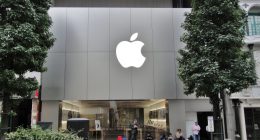In a move to reinforce the security infrastructure of its iconic iPhone, Apple has rolled out the highly anticipated iOS 17.3 update, bringing forth a host of enhancements that not only fortify the device against potential threats but also enrich the overall user experience.
At the heart of the iOS 17.3 update lies the Stolen Device Protection feature, a significant departure from traditional passcode-centric security. With the new feature, the Cupertino-headquartered tech giant has mandated biometric authentication—either through fingerprint scans or Face ID—for critical actions. This move aims to curtail unauthorized access to sensitive accounts, such as iCloud, email, and banking information.
To empower users and facilitate a seamless adoption of these security features, Apple has designed an intuitive activation process. Enabling Stolen Device Protection is a user-friendly endeavor accessible through the Settings app. By navigating to Face ID & Passcode, entering the device passcode, and toggling the Stolen Device Protection option, users can effortlessly embrace the heightened security capabilities.
“Stolen Device Protection adds a layer of security when your iPhone is away from familiar locations, such as home or work, and helps protect your accounts and personal information in case your iPhone is ever stolen. When Stolen Device Protection is enabled, some features and actions have additional security requirements when your iPhone is away from familiar locations such as home or work. These requirements help prevent someone who has stolen your device and knows your passcode from making critical changes to your account or device,” Apple noted in a support page. Interested users need to go to the Settings app and select Face ID & Passcode. Next, they need to enter their device passcode and toggle the feature on.
Complementing the Stolen Device Protection feature is the introduction of “Security Delay” for actions that demand heightened security. Processes such as changing the Apple ID password or iPhone passcode now entail a waiting period, coupled with the prerequisite of an additional successful biometric authentication after an hour. This temporal safeguard aims to thwart malicious attempts and ensures that legitimate users are at the helm of critical operations. If the user’s iPhone is stolen, then the security delay will stop the thief from “performing critical operations” so that the user can mark their device as lost.
Adding another layer of sophistication to security, the iOS 17.3 update introduces contextual awareness. Stolen Device Protection triggers the Security Delay exclusively when the iPhone is situated away from familiar locations, such as home or work. This context-sensitive approach tailors the authentication requirements based on the user’s location, enhancing the overall security posture. Beyond the realm of security, the iOS 17.3 update introduces features aimed at elevating the overall user experience. Collaborative playlists in the Apple Music app allow users to create and contribute to shared musical compilations, fostering a sense of collaboration among friends and family. And for avid travelers, Apple has integrated AirPlay support for TVs in select hotels. This innovative feature enables users to seamlessly stream content from their iOS devices to compatible hotel TVs, expanding entertainment options and aligning with Apple’s commitment to providing a versatile and user-centric ecosystem.





